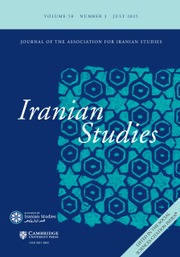No CrossRef data available.
Article contents
English Loanwords in Persian
Published online by Cambridge University Press: 26 June 2025
Abstract
English words and phrases have been creatively adopted, adapted, and appropriated by Persian speakers, resulting in a Persianized form of English that is widely used in daily conversations in Iran. This article aims to identify and describe various English loanwords and phrases commonly integrated into everyday Persian discourse, reflecting Iran’s sociolinguistic globalization. The research is guided by two key questions: How do Iranians Persianize English words and phrases in daily conversations? And what broader patterns emerge in this Persianization process? To address these questions, a qualitative analysis was conducted to examine the prevalence and patterns of English loanwords in Iranian discourse. The findings suggest that Persianized English creates a hybrid mode of expression that blends Persian linguistic traditions with contemporary English influences, shaping identity and communication within Iranian society. The study concludes by recommending further research on the effects of Persianized English on public discourse, media, education, and the daily cultural practices of Iranians.
Keywords
Information
- Type
- Article
- Information
- Copyright
- © The Author(s), 2025. Published by Cambridge University Press on behalf of The Association for Iranian Studies.


